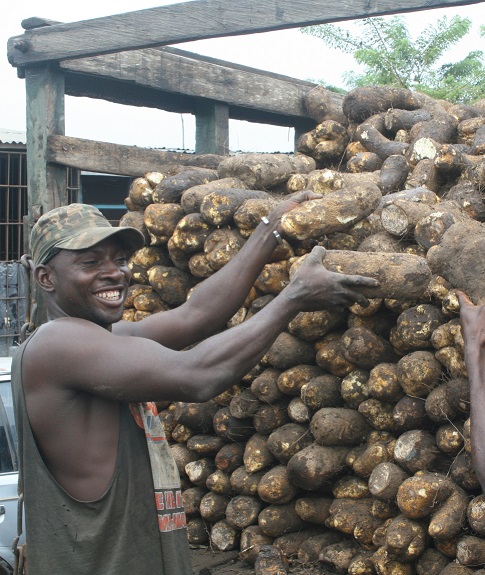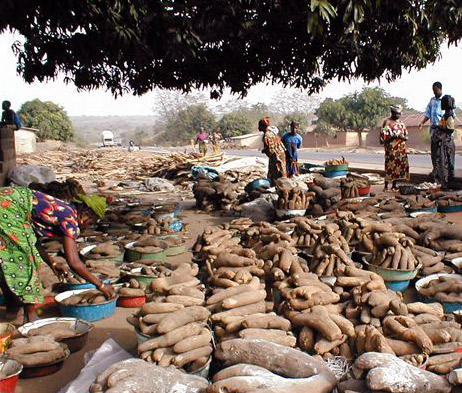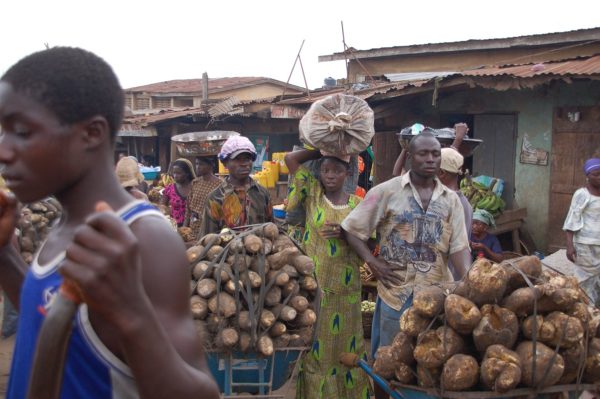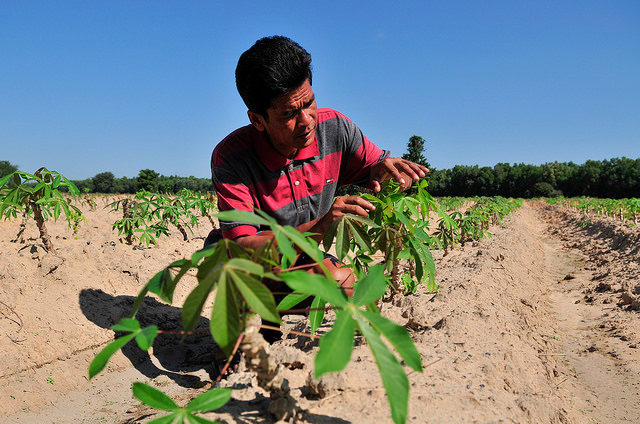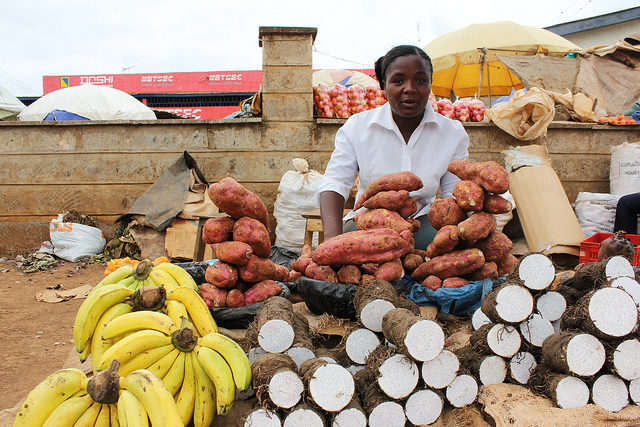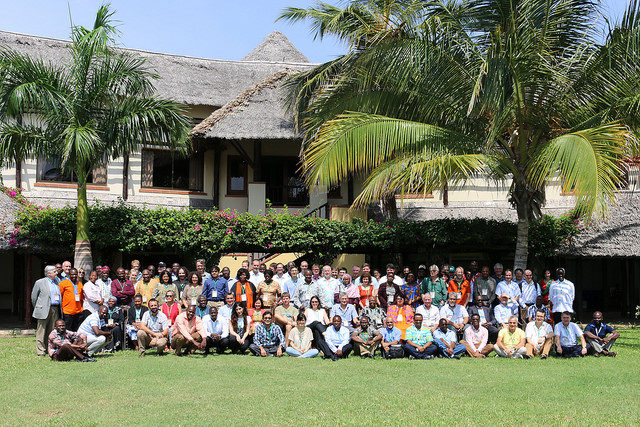Yam is a very important and popular RTB crop in West Africa, with 99% of the world production coming from just five countries in that region (Benin, Côte d’Ivoire, Ghana, Nigeria and Togo). The traditional staple crop has deeply-rooted cultural significance: while yam festivals are held in African countries such as Nigeria and Ghana, its cultivation is also a tradition in Latin American and Asian-Pacific countries such as Colombia, Jamaica, Philippines, Fiji, Indonesia and Vietnam. However, the potential of the “King of Crops” – as it is known in Nigeria – seems to have been underexploited, something that could change thanks to recent initiatives.
After RTB was launched in early 2012, the yam-breeding unit of the International Institute of Tropical Agriculture (IITA) started working on several initiatives. Since then, various advances have been made, starting with a propagation technique that uses vertical sacks with vine cuttings, which allows for an earlier recommendation of new varieties, speeding up the process. The time it takes for IITA to recommend varieties to the national systems could be reduced from 9 to 4 years using this technique. We have also discovered, for the first time, plants free of viruses, coming from true seed, which opens a new window to determine the real yield potential of yam, and also improves possibilities for germplasm exchange. It also has facilitated improved screening protocols for nematode, drought and atrachnose resistance.
In a partnership with the United Nations International Trade Centre, based in Geneva, IITA also developed a participatory methodology that led to the development of a national yam value chain strategy in Ghana. IITA started consultations with Ghanaian institutions in 2010 to support the development of the strategy, which aimed at creating business and industry development with social impact while ensuring food security. It included the participation of all the value chain stakeholders, who decided about markets, areas, products and demands for support institutions. Ghana was the first country to adopt such a strategy, partly because yam was one of the crops that the Ministry of Trade and Industry selected to support export diversification and private sector development.
The Ghana Yam Strategy was launched following the first ever Global Conference on Yams, held in Accra October 3-6, 2013. The event, which was attended by more than 150 participants from 20 countries, was an opportunity for stakeholders to explore recent innovations in yam improvement, share lessons learned, identify research and development needs, and develop global alliances. In the words of Dr. Robert Asiedu, IITA Director for Western Africa, RTB Leader and the convener of the conference: “The event provided a platform for consultation and development of a global strategy for improving the yam sector based on genetic enhancement; crop protection and mitigation of risks due to pests, diseases and climate change; conservation of genetic resources; prevention of postharvest losses; improved seed systems; crop diversification; and enhancing the industrial potential of yam and improved market access.” All of these are RTB priorities.
Both the conference and the Ghana yam value chain strategy demonstrate the level of interest in tapping the unexploited potential of yam and in raising its profile as a global crop. For Antonio López-Montes, IITA yam breeder, this is only the beginning. Other countries have expressed interest in elaborating yam strategies similar to Ghana’s with the help of IITA and ITC. “We are in the process of finding funds to support the development of yam value chain strategies for Nigeria, Benin, DR Congo, and Togo in Africa; and Colombia, Jamaica and Cuba in the Caribbean and Latin America, ” he explained.
As for RTB research on yams, it is moving forward. The yam genome sequence should be released next year, and a yam metabolomics platform is in process. A catalogue of elite varieties is scheduled to be published in 2014, along with a publication on farmers’ agroecological knowledge about yam, climate change and soil fertility. And to please palates and develop market opportunities, IITA is currently working with the private sector in West Africa to incorporate yam flour into noodle production. Bread with 20% to 40% yam flour is already a reality: it was launched with the value chain strategy in Ghana when an IITA baker taught a group of local bakers how to make yam bread, biscuits, cupcakes and chips, among other products.
By Véronique Durroux-Malpartida
